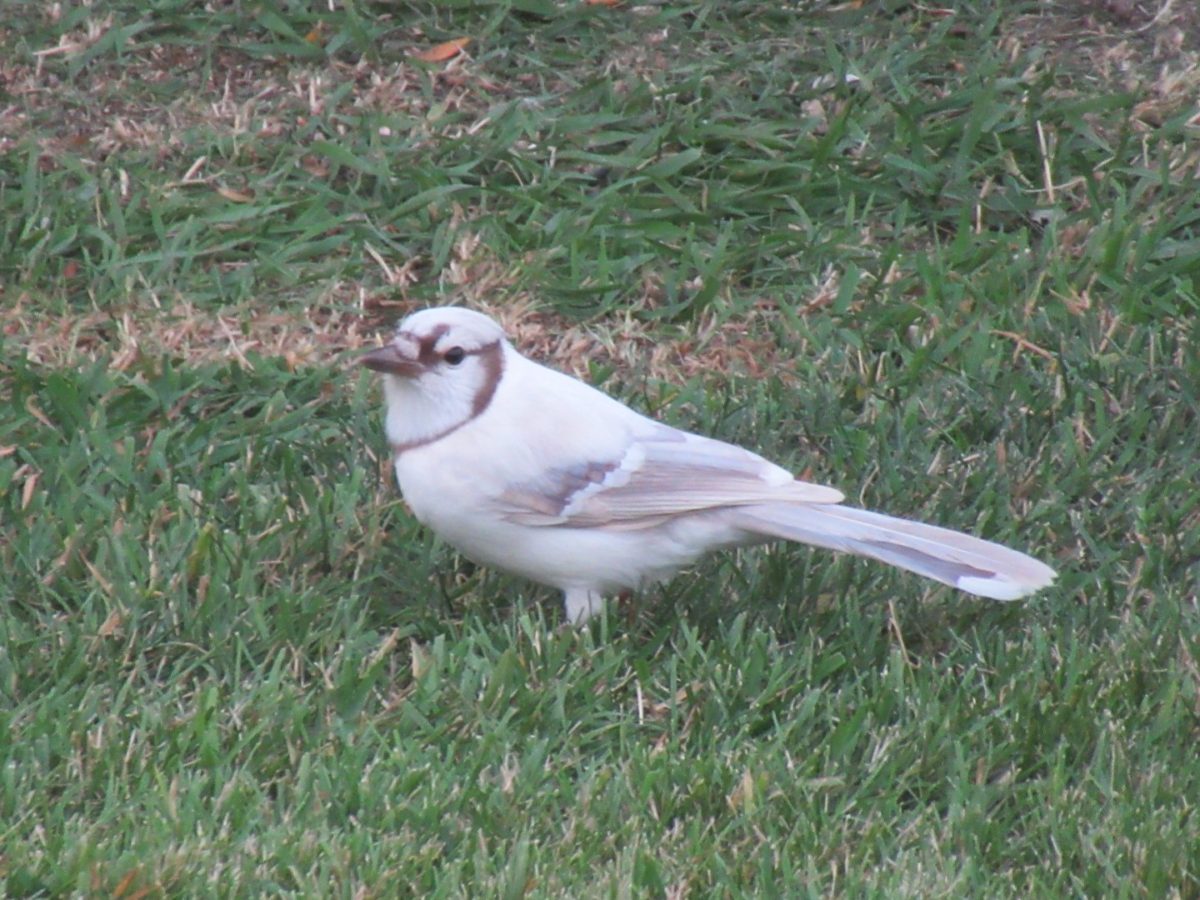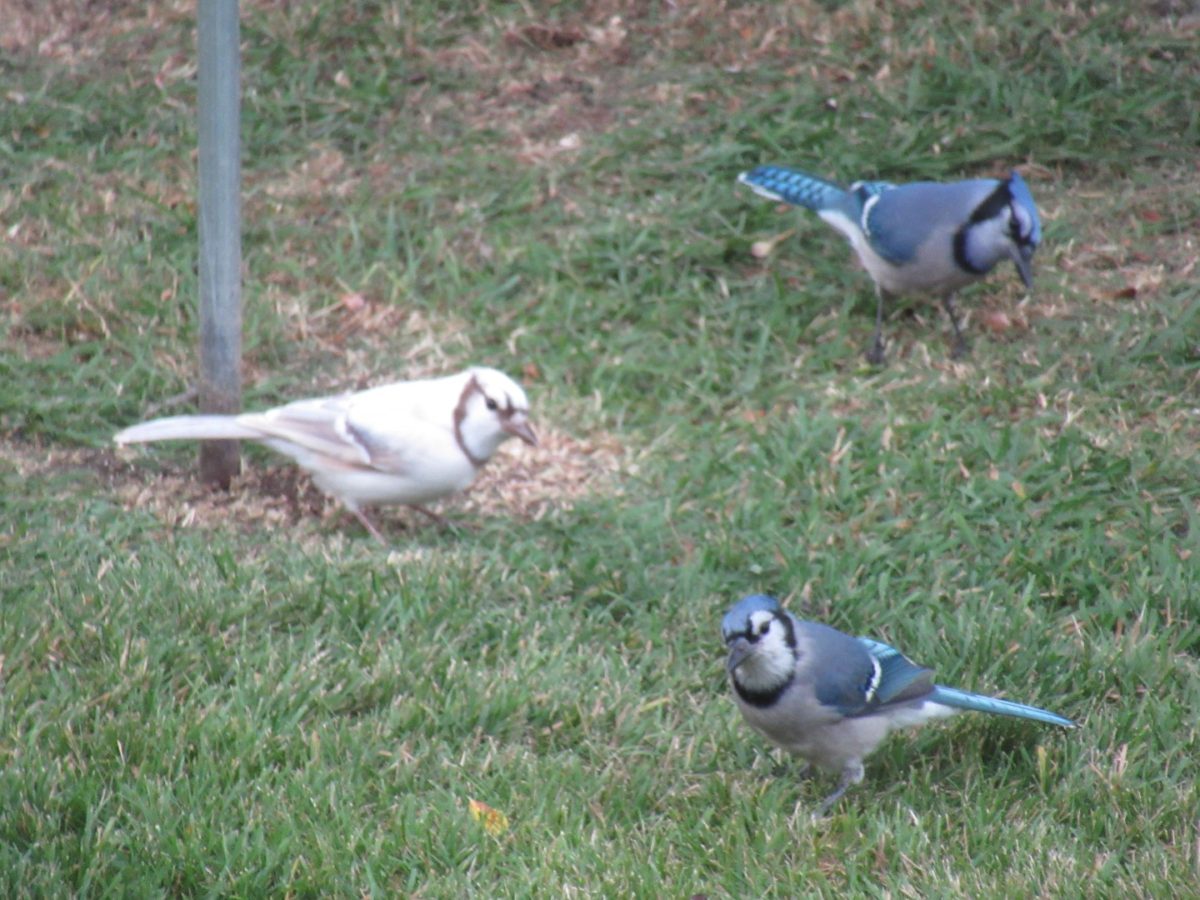Posted by Bob Lefebvre
Paul Koegler was lucky enough to see this Common Loon with very little dark pigmentation on August 15, 2015 at Whitetail Lake, BC. Leucistic birds are not too common, especially ones like this that lack the darkest pigments in all their feathers. Birds with irregular white splotches or patches seem to be more common. The bird is not albino; if it was it would have pink eyes, a light bill, and whiter feathers.

[exif id=”14714″]
This looks like an adult bird. It has the black bill of an adult and you can faintly see the ring around the neck. It is with at least two other adult loons, so they were either done breeding at this time or were unsuccessful breeders. Breeding loons are very territorial and a breeding male will not tolerate any other loon besides its mate being nearby.

[exif id=”14713″]
In about a week we should be seeing the first of the migrating loons coming through Calgary. They can be seen on Glenmore Reservoir, the Bow River, and other large bodies of water. If we’re lucky we may get other species here on migration such as the Pacific Loon or even Arctic or Red-throated Loons.












